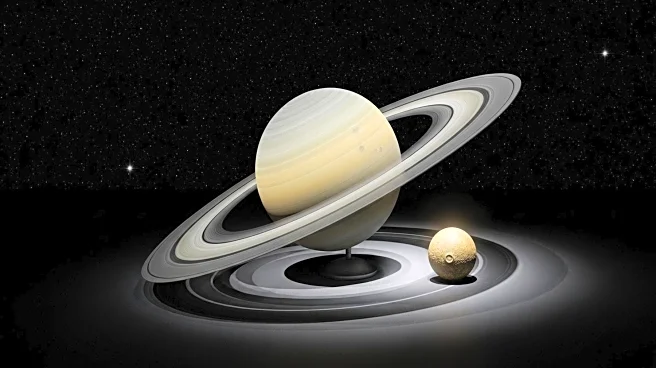What's Happening?
New research from NASA's Dawn mission suggests that the dwarf planet Ceres may have once had conditions suitable for life. The study, published in Science Advances, indicates that Ceres possessed a long-lasting internal heat source driven by radioactive decay, which could have sustained a subsurface ocean. This ocean, rich in minerals and organic molecules, could have provided the necessary energy for microbial life. The findings highlight that Ceres had liquid water, essential chemical building blocks, and a viable energy source, making it potentially habitable for hundreds of millions of years between 2.5 and 4 billion years ago.
Why It's Important?
The discovery of potential habitability on Ceres expands the understanding of where life might exist beyond Earth. It suggests that other mid-sized, water-rich celestial bodies in the solar system could have also hosted habitable conditions in the past. This research could influence future space exploration missions, as scientists may prioritize similar bodies for investigation. The study underscores the importance of understanding planetary evolution and the conditions that can support life, which could have implications for the search for extraterrestrial life.
What's Next?
While there is no evidence that life ever existed on Ceres, the findings encourage further exploration of the dwarf planet and similar celestial bodies. Future missions could focus on detecting signs of past life or understanding the processes that led to the cessation of habitable conditions. The study also opens up possibilities for investigating other icy worlds in the solar system, such as Europa and Enceladus, which may have similar subsurface oceans.
Beyond the Headlines
The research on Ceres highlights the potential for life in environments previously considered inhospitable. It challenges the traditional view that life requires sunlight, suggesting that chemical energy from hydrothermal activity could sustain life in subsurface oceans. This could lead to a broader definition of habitable zones in the universe and influence the criteria used to search for life on exoplanets.










